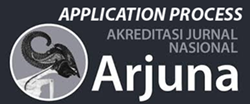Creation of Accessories Shape of Buffalo Head with Source of Ideas for Unan-Unan Ceremony Using Waste Techniques
DOI:
https://doi.org/10.59653/jimat.v2i03.944Keywords:
styrofoam, zero waste, head accessories, unan-unanAbstract
Along with the development of the industrial sector, without realizing it, this raises new problems, namely environmental pollution by liquid, solid, gas, and B3 (Toxic and Hazardous Materials) waste. The purpose of this research is to increase the selling value of waste and manage waste so as not to pollute the environment. This research uses the Practice-led Research method, which is a scientific work derived from ongoing practice research by creating new works through research and practice carried out On this occasion, the researcher will create an accessory made of styrofoam material and will be published in a Unesa Fashion Creation Title performance in 2023 which carries the big theme of BHUMIBRAMA. The result of this study is an accessory in the shape of a buffalo head with styrofoam as the main material.
Downloads
References
A'isyah, N., & Widowati, T. (2019). Kelayakan Enceng Gondok Sebagai Aksesoris Pengantin Solo. BEAUTY AND BEAUTY HEALTH EDUCATION JOURNAL.
Alfiani, N., & Listiani, S. (2022, Juni 27). Media Pembelajaran Aksesoris Ramah Lingkungan. From Flib Builder: https://online.flipbuilder.com/geahy/jwop/files/basic-html/page3.html
Andalangit, A. R. (2021). Perancangan Self Defense Kit Dalam Kamuflase Aksesoris JURUSAN DESAIN FAKULTAS SENI RUPAINSTITUT SENI INDONESIA YOGYAKARTA.
Anggraini, A. M., & Suhartini, R. (2021). Efektivitas Zero Waste Fashion terhadap Pengurangan Limbah Tekstil dalam Pembuatan Busana Ready-To-Wear. Jurnal Online Tata Busana, 10(02), 191-200.
Apsani, N. R. (2020). Pengembangan Busana Fantasi Dengan Sumber Ide Fenomena El Nino. Universitas Pendidikan Ganesha.
Ariaswara, K. (2020). Model Pengelolaan Sampah Melalui Program Bank Sampah di Lingkungan Sekolah Dasar Negeri Kecamatan Bonang, Kabupaten. eprints undip, 2.
Arumsari, A. (2015). Contemporary Jewelry Trend as a Result of People Lifestyle’s Changes and Fashion Industries. International Journal of Humanities Social Sciences and Education
Doriza, S., & Putri, V. U. (2014). Pemanfaatan Limbah Botol Plastik Melaui pelatihan Wirausaha Produk Aksesoris Bagi Ibu Rumah Tangga. Jurusan IKK Fakultas Teknik Universitas Negeri Jakarta.
Febriani, R., & Riyanto, E. d. (2021). Upacara Adat Tengger di Ambang Komodifikasi: Merawat Tradisi Dari Ancaman Desakralisasi. Jurnal Antropologi: Isu-Isu Sosial Budaya.
Gadi, A. C. Z., Khayati, E. Z., Yuli, S. E., Sabatari, W., & Warno, K. (2020). Penerapan Metode Zero Waste Cutting dan Flat Pattern Pada Blush Bergaya Casual Bussines Sebagai Upaya Green Lifestyle. Prosiding Pendidikan Teknik Boga Busana, 15(1).
Guruprajab. (2023). Zero Waste Menurut Para Ahli. From Guruprajab : https://www.guruprajab.com/2023/08/zero-waste-menurut-para-ahli.html
Hendriyana, H. (2022). Metodologi Penelitian Penciptaan Karya (P. Christian, Ed.; Edisi II). ANDI.
Marcella, S. A. (2019). PERANCANGAN PRODUK AKSESORIS BERBAHAN. Desain Komunikasi Visual, Seni dan Desain, Universitas Kristen Petra.
Ni'matul, A., & Lutfiati, D. (2021). VALIDASI MEDIA PROTOTIPE PEMBUATAN AKSESORIS DARI DALAM MENINGKATKAN KETERAMPILAN IBU PKK DESA JANTI KECAMATAN WARU KABUPATEN SIDOARJO. JURNAL UNIVERSITAS NEGERI SURABAYA.
Purwanti, Alvionita Ajeng. (2018). Pengelolaan limbah padat bahan berbahaya dan beracun (B3) rumah sakit di RSUD dr. Soetomo surabaya. Jurnal Kesehatan Lingkungan, 10(3), 291–298.
Downloads
Published
How to Cite
Issue
Section
Categories
License
Copyright (c) 2024 Qurrota Aini, Inty Nahari, Ma’rifatun Nashikhah, Deny Arifiana

This work is licensed under a Creative Commons Attribution-ShareAlike 4.0 International License.
Authors who publish with this journal agree to the following terms:
- Authors retain copyright and grant the journal right of first publication with the work simultaneously licensed under a Creative Commons Attribution-ShareAlike that allows others to share the work with an acknowledgement of the work's authorship and initial publication in this journal.
- Authors are able to enter into separate, additional contractual arrangements for the non-exclusive distribution of the journal's published version of the work (e.g., post it to an institutional repository or publish it in a book), with an acknowledgement of its initial publication in this journal.
- Authors are permitted and encouraged to post their work online (e.g., in institutional repositories or on their website) prior to and during the submission process, as it can lead to productive exchanges, as well as earlier and greater citation of published work (See The Effect of Open Access).























